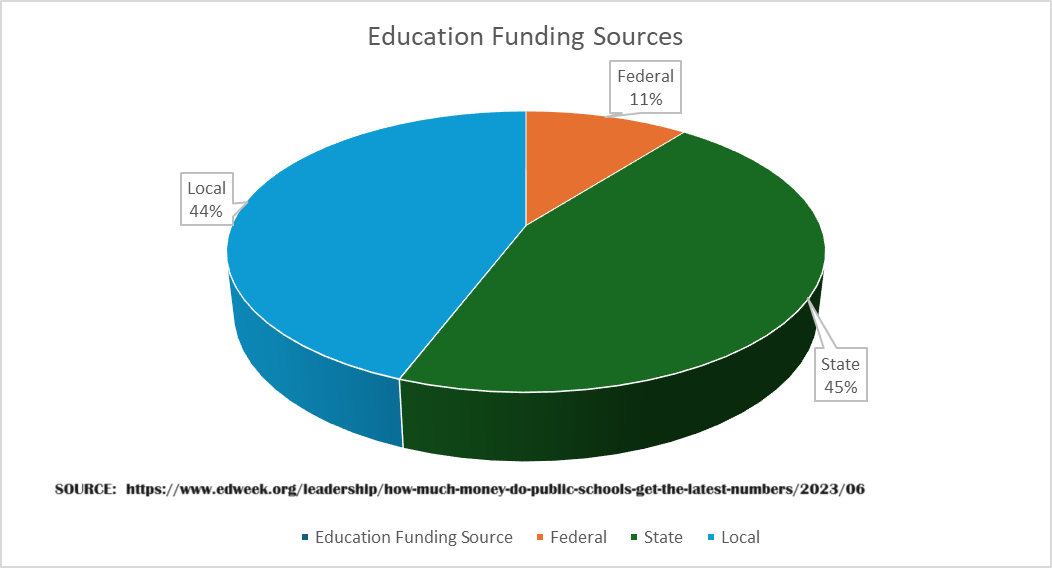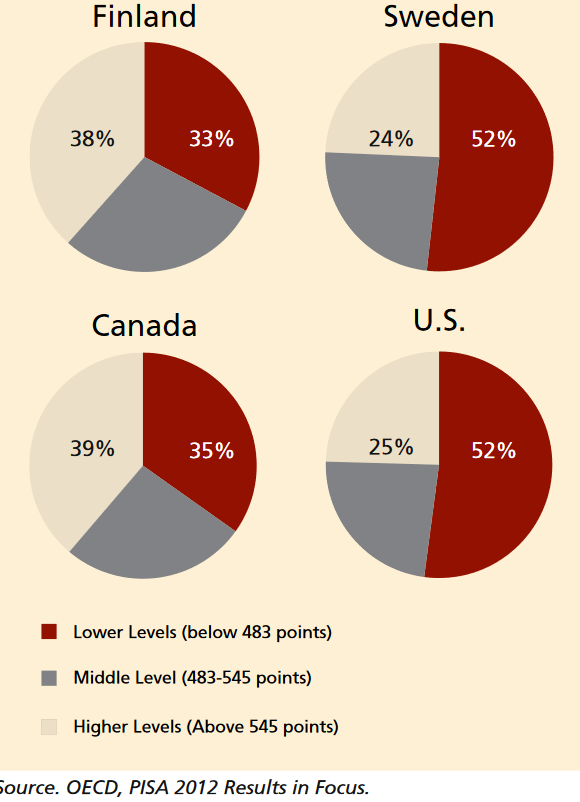Education and Local Public Banks
The findings in this brief (see chart) compare pairs of countries using these two different approaches. The data suggest that the education sector is better served by a public investment approach that supports each and every child than by a market-based, competition approach that creates winners…and losers. While competition might work in sports leagues, countries should not create education systems in which children lose in the classroom. This report explains how and why some children can lose in a privatized system and makes recommendations to ensure that all children receive equitable, high-quality educational opportunities.
As you can see from the chart, local governments are paying roughly 44% of the total cost for education in their respective communities.
Moreover, the share of money going to voucher school programs has steadily increased. But as the chart below illustrates, the performance has a proportional decline when compared to public school performance.
With a city, county, or state public bank, funding for public education can be bolstered and dramatically increased, benefiting the community at large without raising taxes.
This is especially true for those marginalized and poorer communities that rely exclusively on public education because they cannot afford the private school options.
On the flip side, many families are seeking private school and home school alternatives, as some public school curricular are advancing extremely controversial political agendas.


